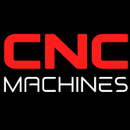CNC Machining vs. 3D Printing: A Comprehensive Comparison

CNC Machining vs. 3D Printing: A Comprehensive Comparison
In the evolving landscape of manufacturing, two prominent technologies stand out: CNC machining and 3D printing (additive manufacturing). Both have revolutionized production processes, yet they differ significantly in methodology, capabilities, and applications. This article delves into a comparative analysis to help you determine which method aligns best with your manufacturing objectives.
🔄 Fundamental Differences
CNC Machining: A subtractive process where material is removed from a solid block using computer-controlled tools to achieve the desired shape.
3D Printing: An additive process that builds objects layer by layer from digital models, typically using materials like plastics, resins, or metal powders.
✅ Advantages
CNC Machining
- High Precision and Tolerance: Capable of achieving tight tolerances, making it ideal for components requiring exact specifications.
- Material Versatility: Compatible with a wide range of materials, including metals, plastics, and composites.
- Surface Finish Quality: Produces parts with superior surface finishes, often requiring minimal post-processing.
3D Printing
- Design Flexibility: Allows for complex geometries and intricate designs that might be challenging with traditional methods.
- Rapid Prototyping: Enables quick production of prototypes, accelerating the design and testing phases.
- Material Efficiency: Generates less waste by using only the necessary material to build the part.
⚠️ Limitations
CNC Machining
- Material Waste: Being subtractive, it often results in significant material waste.
- Complexity Constraints: Certain complex geometries may be difficult or impossible to machine.
- Setup Time and Cost: Initial setup can be time-consuming and costly, especially for low-volume production.
3D Printing
- Mechanical Properties: Printed parts may have inferior mechanical properties compared to machined parts, depending on the material and printing process.
- Surface Finish: Often requires post-processing to achieve desired surface finishes.
- Material Limitations: While the range is expanding, not all materials are suitable for 3D printing.
🧩 Ideal Applications
- CNC Machining: Best suited for high-precision parts, especially in aerospace, automotive, and medical industries.
- 3D Printing: Ideal for rapid prototyping, custom components, and complex designs in industries like healthcare, architecture, and consumer products.
💡 Making the Right Choice
The decision between CNC machining and 3D printing hinges on several factors:
- Volume: For mass production, CNC machining is often more cost-effective. For low-volume or one-off parts, 3D printing may be more economical.
- Complexity: Complex, intricate designs are more feasible with 3D printing.
- Material Requirements: If specific materials with high strength or heat resistance are needed, CNC machining might be the better option.
- Lead Time: 3D printing generally offers faster turnaround for prototypes and small batches.
Conclusion
Both CNC machining and 3D printing have their unique strengths and are not mutually exclusive. In fact, many manufacturers integrate both methods to leverage their respective advantages. By understanding the distinctions and applications of each, businesses can make informed decisions to optimize their manufacturing processes.


